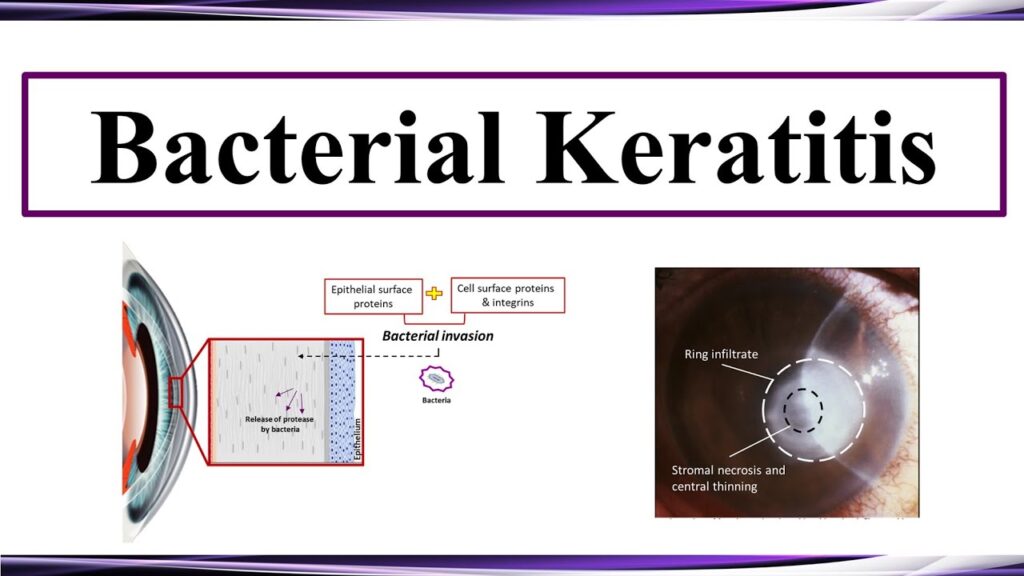Bacterial keratitis is a severe eye infection affecting the cornea, the clear, dome-shaped surface covering the front of the eye. This condition demands immediate medical attention to prevent complications such as vision loss or permanent scarring of the cornea. In this article, we delve into the symptoms, causes, diagnostic procedures, treatment options, and preventive measures .

What Is Bacterial Keratitis?
Bacterial keratitis is an inflammatory condition of the cornea caused by bacterial infection. Common pathogens include Pseudomonas aeruginosa, Staphylococcus aureus, and Streptococcus pneumoniae. It often develops after trauma, prolonged contact lens wear, or pre-existing eye conditions. Without prompt treatment, bacterial keratitis can lead to severe complications, including blindness.
Symptoms of Bacterial Keratitis
The symptoms of bacterial keratitis vary in severity but typically include:
- Severe eye pain
- Redness and swelling of the eye
- Excessive tearing or discharge
- Sensitivity to light (photophobia)
- Blurred or decreased vision
- A white or gray spot on the cornea
Patients experiencing these symptoms should seek medical attention immediately to minimize the risk of complications.
Causes and Risk Factors
Causes
Its a primarily caused by bacterial pathogens. The most common culprits include:
- Gram-negative bacteria: Pseudomonas aeruginosa, often associated with contact lens wear
- Gram-positive bacteria: Staphylococcus aureus and Streptococcus pneumoniae
Risk Factors
Several factors increase the likelihood of developing bacterial keratitis:
- Contact lens wear: Poor hygiene, overnight wear, or extended use of contact lenses
- Eye trauma: Scratches or foreign objects in the eye
- Immune suppression: Diabetes, HIV, or other conditions affecting immunity
- Pre-existing eye diseases: Dry eye syndrome or previous corneal surgeries
- Contaminated water exposure: Swimming or showering with contact lenses
Diagnosis of Bacterial Keratitis
Early and accurate diagnosis is crucial. A comprehensive eye examination includes:
- Visual acuity test: Evaluates vision clarity
- Slit-lamp examination: Magnified view of the cornea for detailed assessment
- Corneal scraping: Collection of samples to identify the bacterial pathogen through microscopy and culture
These tests help determine the most effective treatment.
Treatment Options
Timely treatment can preserve vision and prevent long-term damage. Key treatment strategies include:
Antibiotic Therapy
- Broad-spectrum antibiotics: Administered initially to combat a wide range of bacteria
- Targeted therapy: Adjusted based on culture results to address specific pathogens
Adjunctive Treatments
- Cycloplegic eye drops: Reduce pain and prevent further inflammation
- Anti-inflammatory medications: Used cautiously to manage swelling
Severe Cases
In advanced infections, surgical interventions such as corneal transplantation may be necessary to restore vision.
Preventive Measures
Prevention plays a pivotal role in reducing the incidence of bacterial keratitis. Follow these guidelines:
- Practice good contact lens hygiene: Clean lenses daily and avoid sleeping in them
- Protect your eyes: Use goggles or other protective gear during activities that pose risks
- Avoid contaminated water: Do not expose contact lenses to non-sterile water
- Regular eye check-ups: Early detection of risk factors or pre-existing conditions

